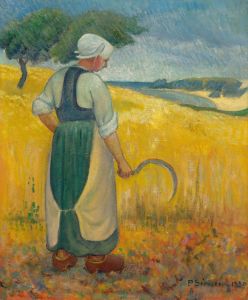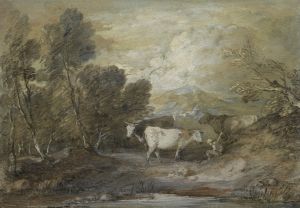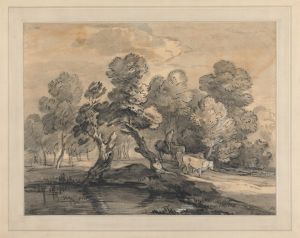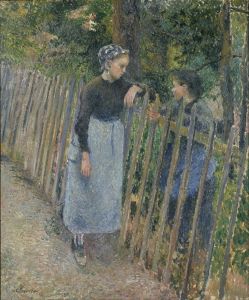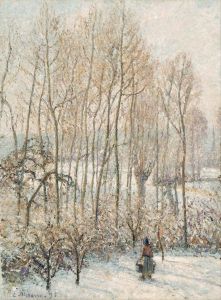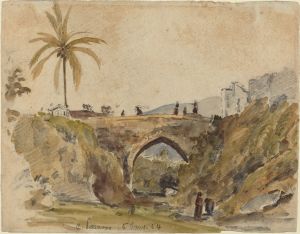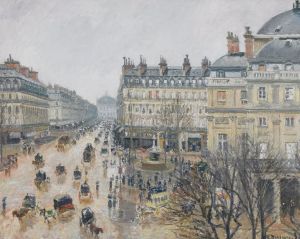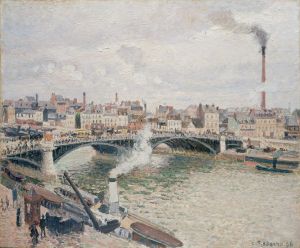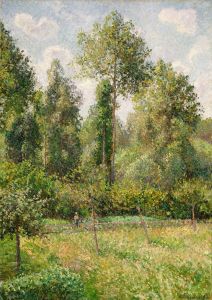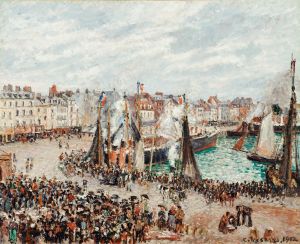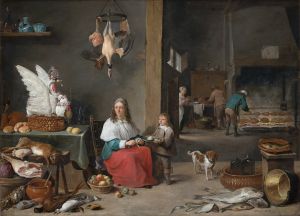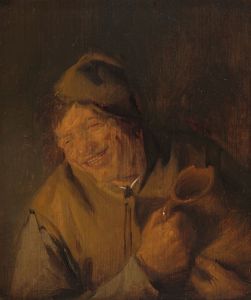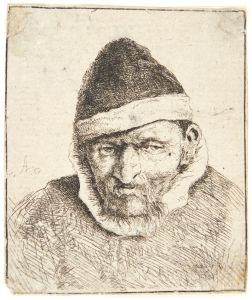
Cowherder
A hand-painted replica of Camille Pissarro’s masterpiece Cowherder, meticulously crafted by professional artists to capture the true essence of the original. Each piece is created with museum-quality canvas and rare mineral pigments, carefully painted by experienced artists with delicate brushstrokes and rich, layered colors to perfectly recreate the texture of the original artwork. Unlike machine-printed reproductions, this hand-painted version brings the painting to life, infused with the artist’s emotions and skill in every stroke. Whether for personal collection or home decoration, it instantly elevates the artistic atmosphere of any space.
Camille Pissarro, a prominent figure in the Impressionist movement, created the painting "Cowherder" during a period when he was deeply engaged with rural themes and the lives of peasants. Born in 1830 on the island of St. Thomas in the Danish West Indies, Pissarro moved to Paris in 1855, where he became a central figure in the development of Impressionism. His works often depicted rural scenes, capturing the essence of peasant life and the natural landscape with a keen observational eye.
"Cowherder" is one of Pissarro's many paintings that reflect his fascination with rural life and the pastoral landscapes of France. Although specific details about the painting's creation, such as its exact date, are not widely documented, it is consistent with Pissarro's broader body of work from the late 19th century. During this time, Pissarro was known for his commitment to painting en plein air, or outdoors, which allowed him to capture the changing light and atmosphere of the countryside with immediacy and vibrancy.
The painting typically features a cowherder, likely a peasant, tending to cattle in a rural setting. This subject matter is emblematic of Pissarro's interest in the everyday lives of working people and his desire to portray them with dignity and respect. The composition of "Cowherder" would likely include elements such as lush greenery, expansive skies, and the gentle interplay of light and shadow, all rendered with Pissarro's characteristic loose brushwork and attention to natural detail.
Pissarro's technique in works like "Cowherder" often involved the use of small, broken brushstrokes and a palette of soft, muted colors, which helped to convey the transient effects of light and atmosphere. This approach was central to the Impressionist movement, which sought to capture the fleeting moments of life and the ephemeral qualities of the natural world.
Throughout his career, Pissarro maintained a strong commitment to the principles of Impressionism, even as he experimented with other styles, such as Neo-Impressionism, later in his life. His dedication to depicting rural life and the working class set him apart from many of his contemporaries, who often focused on urban scenes and the leisure activities of the bourgeoisie.
Pissarro's influence extended beyond his own work; he was a mentor to several other notable artists, including Paul Cézanne and Paul Gauguin, and played a crucial role in organizing the first Impressionist exhibition in 1874. His contributions to the movement were instrumental in shaping the direction of modern art.
While specific exhibitions or collections featuring "Cowherder" are not extensively documented, Pissarro's works are held in numerous prestigious institutions worldwide, including the Musée d'Orsay in Paris, the Metropolitan Museum of Art in New York, and the National Gallery in London. These collections reflect the enduring significance of Pissarro's art and his impact on the trajectory of modern painting.
In summary, "Cowherder" by Camille Pissarro exemplifies the artist's dedication to capturing the essence of rural life through the lens of Impressionism. His sensitive portrayal of the natural world and the people who inhabit it continues to resonate with audiences, underscoring his legacy as a pioneering figure in the history of art.





